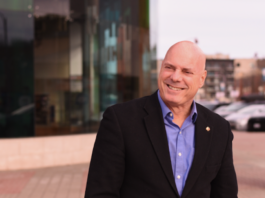
As another school year settles in, talk of student debt and financial aid is circulating once again.
Despite the rise in tuition fees in the last decade, an article in The Globe and Mail said many students are graduating debt-free.
University of British Columbia economics professor Paul Beaudry said the ways in which the media have been reporting the student debt levels in Canada are extremely misleading.
Beaudry said the question regarding debt is asked in two ways and this creates a problem when looking at the bigger picture.
“Groups like Statistics Canada will ask if a student has debt and this is followed by how much. This is done very seriously; the problem is the media is reporting them improperly. If all students had debt, the way you ask the question wouldn’t matter,” Beaudry said.
Rachel Aiello, a third-year journalism student in the joint program with University of Ottawa and Algonquin College said she has been using OSAP consistently. She said she is not surprised that the media has misrepresented the debt situation.
“I have a few friends who’ve graduated debt-free and the media does tend to over-exaggerate. There needs to be more journalistic accuracy and context given to the statistics to have truth in numbers,” she said.
Beaudry said the problem is that the numbers reflect students who are in debt; this is called taking a conditional average. He said the collection of average debt that includes all students is what is missing from the media.
Conditional debt averages are $13,600 for college graduates while doctoral graduates generally graduated with a debt of about $25,000. Bachelors and masters degrees average a debt between $20,000 and $25,000, according to The Globe and Mail.
Media spokesperson for the Canadian Federation of Students (CFS) Adam Awad said he thinks it’s definitely important to look at all statistics in context in order to fully appreciate what they mean. However, he disagrees that student debt is being misrepresented.
“[This idea] does not provide information on the increase in numbers of students who take on education-related debt, given that almost half a million people with Canada Student Loan debt are unable to make any payments because of living in poverty,” Awad said.
“That number doesn’t include all of the people who aren’t on repayment assistance and are struggling to make payments as well as stay afloat.”
Lu Ann Pannunzio, a recent graduate from advertising at Mohawk College, got her diploma debt-free.
After not being eligible for OSAP, she got some assistance from her parents at first and started working on campus. By her second year she worked two part-time jobs, one full-time job and finished school full-time online. She also received funding from her student association and tuition assistance bursaries.
“It wasn’t easy but it paid off. I think being rejected by OSAP too many times helped motivate me to find work and get things done for myself,” Pannunzio said.
She adds that being out of debt made it more convenient to find work.
“I had money saved up for travel when needed. It was a relief and took away stress that my friends who were graduating with debt were dealing with.”
While mainstream media are taking a closer look at student debt levels, Awad cautions that it has enormous consequences for students, graduates and the economy both immediately and in the coming decades.
“It is important for the broader community to appreciate how much of an impact it has on people’s lives and how easy it would be to address the issue,” Awad said.
“By highlighting its impact on a personal and economic level, the media help to make this an issue that politicians can’t ignore.”



